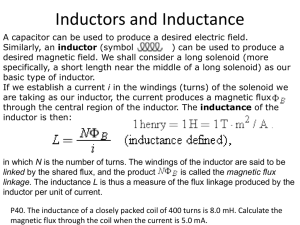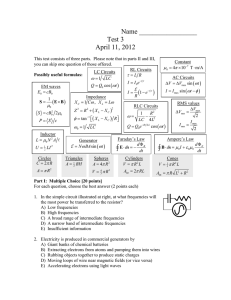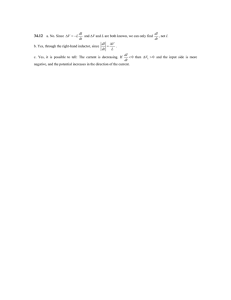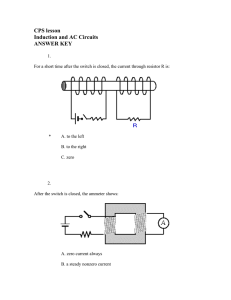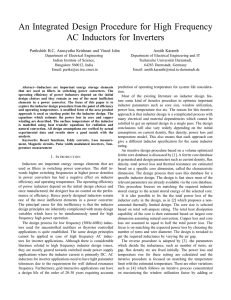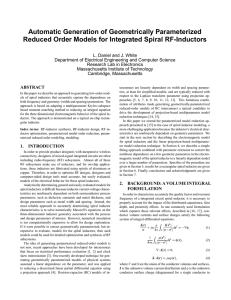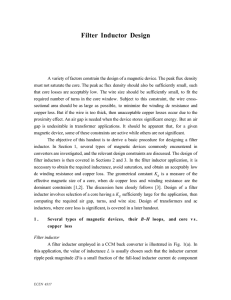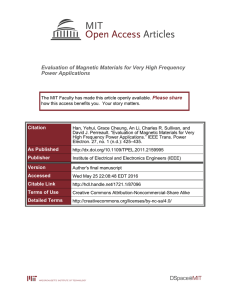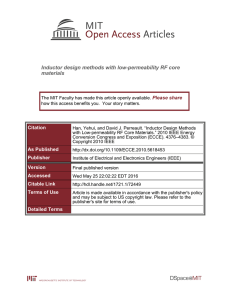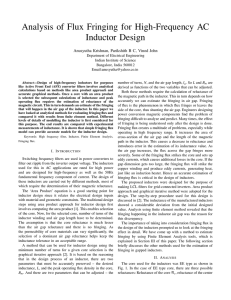PHYS 2B Quiz 7 Solutions 1 Problem 1 Aris
advertisement
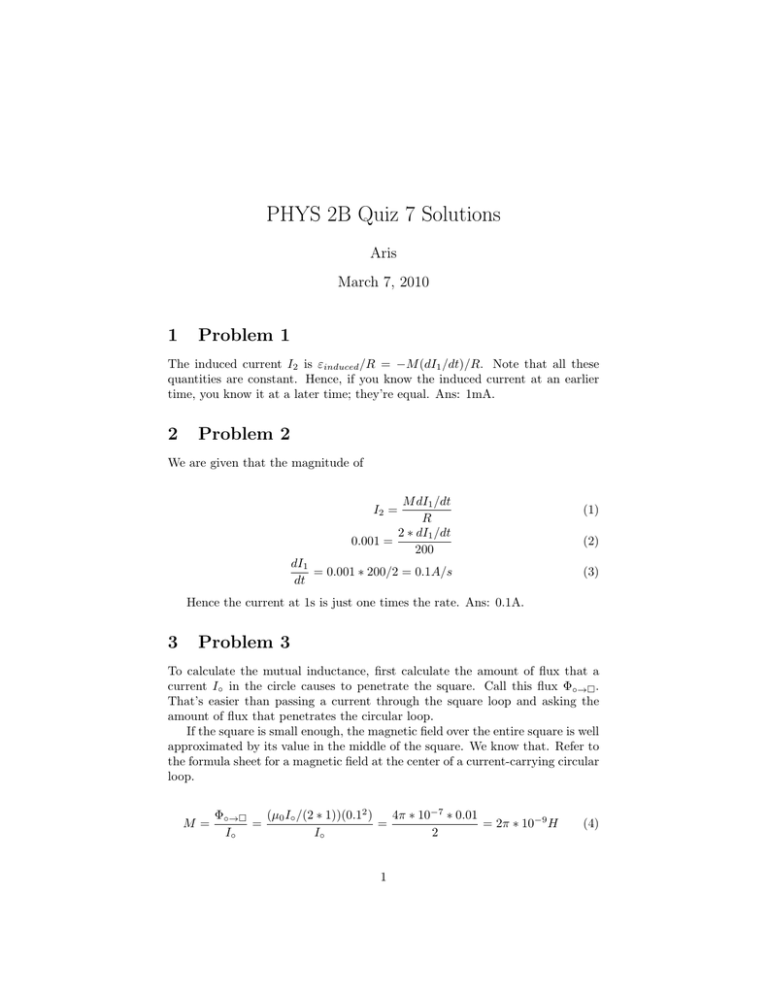
PHYS 2B Quiz 7 Solutions Aris March 7, 2010 1 Problem 1 The induced current I2 is εinduced /R = −M (dI1 /dt)/R. Note that all these quantities are constant. Hence, if you know the induced current at an earlier time, you know it at a later time; they’re equal. Ans: 1mA. 2 Problem 2 We are given that the magnitude of M dI1 /dt R 2 ∗ dI1 /dt 0.001 = 200 I2 = dI1 = 0.001 ∗ 200/2 = 0.1A/s dt (1) (2) (3) Hence the current at 1s is just one times the rate. Ans: 0.1A. 3 Problem 3 To calculate the mutual inductance, first calculate the amount of flux that a current I◦ in the circle causes to penetrate the square. Call this flux Φ◦→ . That’s easier than passing a current through the square loop and asking the amount of flux that penetrates the circular loop. If the square is small enough, the magnetic field over the entire square is well approximated by its value in the middle of the square. We know that. Refer to the formula sheet for a magnetic field at the center of a current-carrying circular loop. M= Φ◦→ (µ0 I◦ /(2 ∗ 1))(0.12 ) 4π ∗ 10−7 ∗ 0.01 = = = 2π ∗ 10−9 H I◦ I◦ 2 1 (4) 4 Problem 4 (Ignoring pesky minus signs.) I◦ = 5 εind M (dI /dt) 2π ∗ 10−9 ∗ (100/1) = = = 2π ∗ 10−6 A R◦ R◦ 0.1 (5) Problem 5 In the steady state just before switch S2 is closed, there is no potential across the inductor before dI/dt = 0. That means that we have an equipotential line starting from the right side of R1 through the inductor and back to the bottom of the cell. If you connect any kind of resistor between two points of equal potential, no current will flow through the resistor at any time. R2 is one such resistor. Ans: 0A. To put it another way, the inductor acts like a path of no resistance. Putting R2 that won’t change a thing. Electrons strictly follow the path of zero resistance and will ignore any other alternatives. 6 Problem 6 When switch S1 is opened, the right half of the circuit, consisting of only R2 and the inductor, is now isolated. Energy stored in the inductor will gradually be lost through heating the resistor and the current decays with a time constant L/R2 = 1/2 = 0.5s. Initially the current is ε/R1 = 1/1 = 1A. The current after one second of decay is 1 ∗ exp(−1/0.5) = exp(−2) = 0.14A. 7 Problem 7 First find the capacitance C. After one quarter a cycle, the energy in the capacitor has completely moved to the inductor. Note: half a cycle is when the energy moves back to the capacitor for the first time, but with electric fields pointing in opposite direction. Three quarter cylcle is when the energy has moved back to the inductor for a second time, but with magnetic fields pointing in opposite direction. A full cycle is when the energy returns to the capacitor with electric fields pointing in the original direciton. √ LC). One quarter a cycle is an angle (in raThe oscillations√go like cos(t/ √ dians) of π/2 = t/ LC = 3/ 0.002 ∗ C. Hence C = (6/π)2 /0.002 ≈ 36/0.02 = 1800. Initially there is a total energy of Q2 /(2C) = 16/3600 ≈ 0.0044J. Total energy is conserved. When p all the energy is √ transferred to the inductor, we have 0.0044 = LI 2 /2 or I = 0.0088/0.002 = 4.4 = 2.1A 2 8 Problem 8 The answer is buried in question 7. Dig: 0.0044J. 3


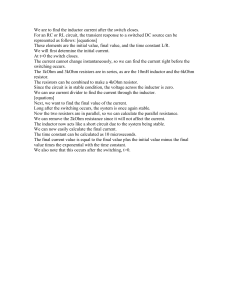

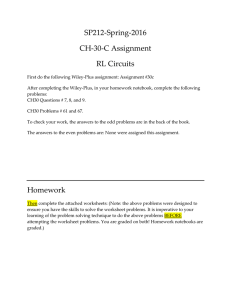
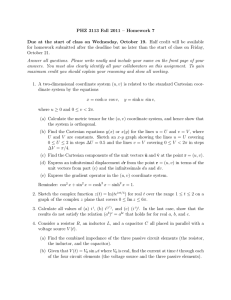


![• [A] WO 9853550 A1 19981126 - MUNK NIELSEN STIG [DK] • [ID](http://s3.studylib.net/store/data/008241369_1-754aeea07c3d8e9488bccb33bdba5023-300x300.png)



